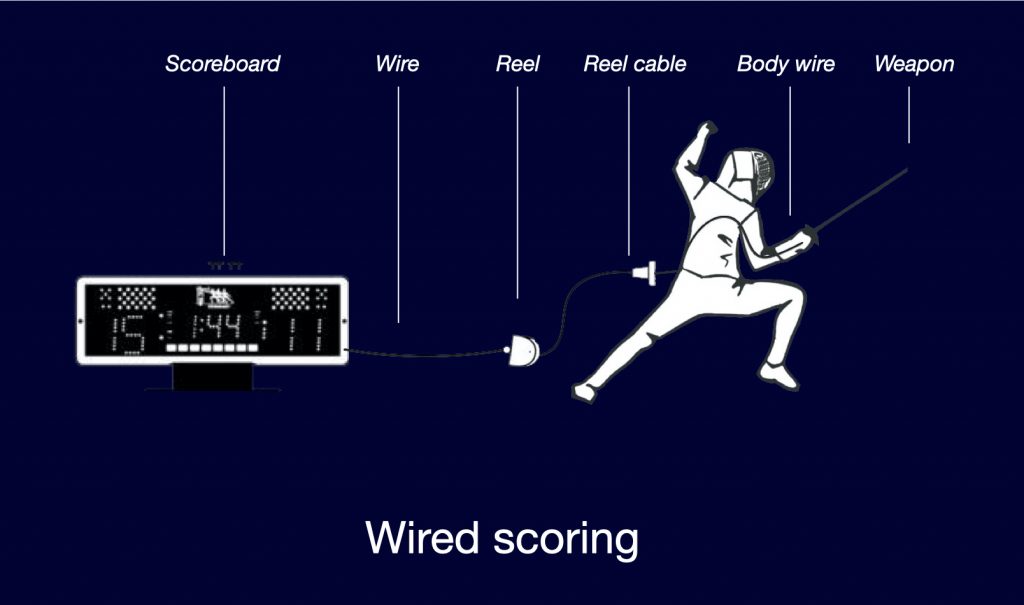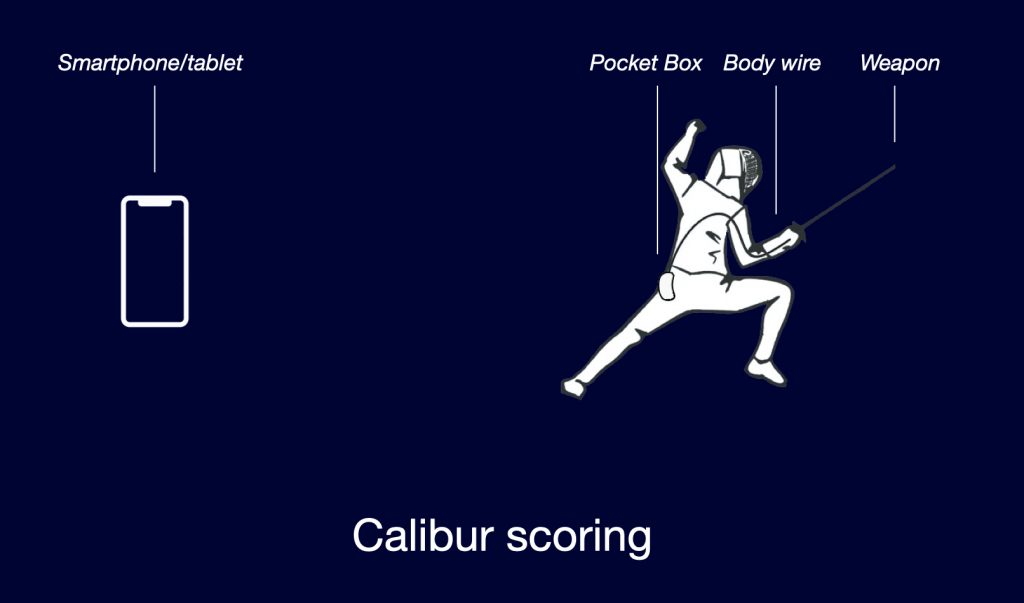We set our goals to change fencing by making it truly wireless.
The current systems are cumbersome, have a lot of parts - even worse they are moving parts- meaning there are a lot of things likely to fail. Yet they play a very important part in fencing.

Presumably, there are very few people who don't have some hard feelings toward reels after repairing one
However if someone wants portability it’s not possible without a serious trade-off between price and accuracy. But why is it necessary to make such a compromise? What are the limiting factors to have both? Let’s see one by one:
- Make it accurate
The first major challenge in wireless scoring the lack of common ground. When 2 fencers are wired-in, they basically form big electric circuits. Put simply the fencers act like switches; when there’s a valid hit, the fencer closes a circuit and the scoring board makes a signal, when there’s an invalid hit (e.g. bellguard) a different circuit is closed and the scoreboard remains silent. However if you take away the wires, there is no circle to close hence it gets challenging to get that information. This is more widely known in fencing as the common ground problem.
Fortunately there are a few ways to get around this issue. Without getting deeply into technical details, all electric systems have quantifiable characteristics. We just need to find a metric that’s different enough when a valid touch occurs, then measure it the right way. If we can get it precise enough we can tell valid and invalid hits apart, right? This immediately leads to the next problem: the vast variety of equipment. It’s not enough to separate valid and invalid hits, we must do it consistently on all the different fencing equipment. Weapons, lamés, masks, bellguards, conductive strips, regardless of age, maintenance, material composition and so on. It’s like you need to design a bullet but it needs to fit perfectly in all the possible guns and rifles.
How could we tackle that?
There are 2 options to develop such a system. The traditional way: is to develop everything in-house trying to replicate all real-life scenarios. First, find a method to overcome the common ground problem. Second test and fine-tune it to the point of acceptable margin of error. Third make it into a commercial device and hope every possible setup was tested before the product release. It’s not hard to see the problem with this method: it gets increasingly harder to approach something close to full accuracy. In reality it’s more likely to get in the neighbourhood of 90-95% and then nearly impossible to get to 99.9% accuracy within reasonable time and cost.
So what if we could design a system that adapts to the environment? A scoring method that gest more and more accurate by usage? To achieve this we need to develop a machine learning method and feed a big pool of touch data into it. So we need to store and access the data, analyse it and finally use it to perfect the model validating. Once it’s up and running the development cycle never stops. With each update, you’ll have a better product in the morning than it was the night before.
- Make it affordable
For lowering costs there are 2 obvious ways to go: make development cheaper, and make production cheaper. Fortunately development gets much faster once the machine learning model runs thus driving it’s cost down.
How can we make production cheaper?
Well, lowering the parts needed would come handy, wouldn’t it? We already got rid of the reels and their wires and we need the body wires and the weapons - at least for the time being - so all fingers point to the scoreboard. Depending on the brand and the functionality, it can cost between 200$-1000$ for a decent training setup, so we also need to get rid of it.
- Make it trusted
There’s a third hidden factor that should be taken care of, a key advantage the old systems have: history. Since they are around for nearly 100 years there’s a level of trust that a wired system will work as it should. A wireless scoring system adds a layer of uncertainty which undermines faith in it. Why? Because it’s hard to know for sure if the fencer failed or the wireless. And people tend to blame the latter. To put it another way, it’s not enough to be accurate but it’s also crucial to appear that way. How can we overcome this hurdle? It turns out the most frequent source of equipment failures are the tips and the body wires. We need to make sure that those are in suitable conditions, and need to notify the fencer of the current condition of her equipment. In short: we need to make it smart.
Neat, isn't it?
TLDR: we need a device which can store and send data wirelessly, is smart, and everyone already has it. I guess you already figured it out, but all these factors are perfectly aligned in smartphones and tablets. And this is just the surface of it, utilising smartphones does not stop at monitoring the condition of the equipment. Not using all that data is such a waste of opportunity, and building useful features around them would make fencing so much easier for clubs and the fencers, but that's up to a future post.


